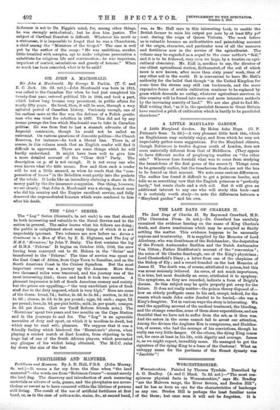FERTILISERS AND MANURES, Fertilisers and Manures. By A. D. Hall,
PBS (John Murray. Os. net.)—It eoems a far cry from the time when "the land manured "—the words are from "Robinson Cruse° "—meant merely the land dug. The discovery and introduction of such manuring materials as nitrate of soda, guano, and the phosphates are never- theless so recent as to have occurred within the lifetime of persons still living. The result of the use of artificial fertilisers at first hand, or, as in the case of cotton-cake, maize, &c., at second hand, Iwas, as Mr. Hall says in this interesting book, to enable the British farmer to raise his output per acre by at least fifty per cent, during the reign of Queen Victoria. The work before us is valuable because an authoritative and painstaking account of the origin, character, and particular uses of all the manures and fertilisers now in the service of the agriculturist. The volume may be regarded as a sequel to the same author'a " Soil," and it is to be followed, very soon we hope, by a treatise on agri- cultural chemistry. Mr. Fall is, needless to say, the director of our oldest agricultural station, Rothamstecl, of the soil of which more is now known, after more than sixty years' work, than of any other soil in the world. It is convenient to have Mr. Hall's authority for the belief that though "in the United Kingdom for some time the stream may still run backwards, and the more expensive forms of arable cultivation continue to be replaced by grass which demands no outlay, whatever agriculture survives in this country will be forced into more and more intensive methods by the increasing scarcity of land." We are also glad to find Mr. Hall writing that, "as it is, the specialist farmers in Great Britain have reached a pitch of cultivation which is hardly to be paralleled elsewhere."


























































 Previous page
Previous page